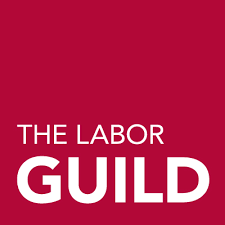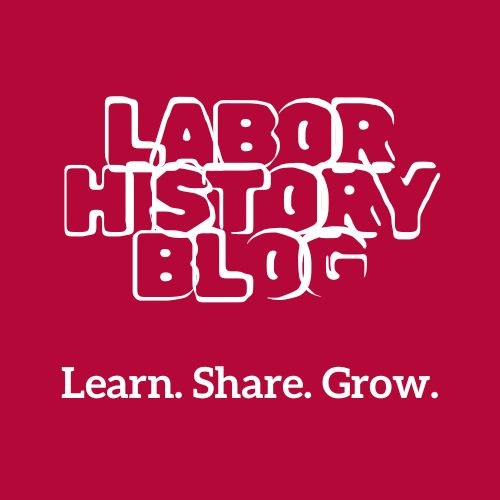June 2024 Labor History Blog: The Homestead Strike
by David Kowalski, Former Executive Director of The Labor Guild
I cannot go into the Homestead Steel Strike without first setting the stage or the climate of the times. Andrew Carnegie was seen as a major captain of industry, as well as a friend to labor. He was quoted to say, just six years before Homestead, “The right of the working man to combine and to form trades-unions is no less sacred than the right of the manufacturer to enter into associations and conferences with his fellows, and it must be sooner or later conceded,” he wrote in Forum magazine in 1886. “My experience has been that trades-unions upon the whole are beneficial both to labor and capital.” All of that talk was extinguished between the South Fork Dam breach and the Homestead Strike.
It seems a group of the wealthiest men of their time- including Carnegie, Henry Frick and Andrew Mellon- purchased property on the lake of the South Fork Dam and called it the South Fork Fishing and Hunting Club, a private retreat for only a few. The dam was built of earth and rock and with it a spillway to control water levels. The group decided to build a fish screen above the spillway to keep from losing lake fish, and they also decided to deepen the lake by one foot. However, by 2013, studies revealed that dig was closer to three feet. Due to the construction on the lowering of the lake and the clogging of debris in the fish screen, water rose during a rainstorm, and the dam was breached. The result was the worst manmade disaster in American history eclipsed only by 9/11/2001.
The dam burst covered 4 square miles, damaging 16,000 homes and killing 2,000 people of Johnstown, PA on Memorial Day 1889. Members of the Fishing and Hunting Club disavowed responsibility and lawsuits were filed. However, no one dared take on such a powerful group of men, thus, no charges or lawsuits proceeded to fruition. Of course, you know “No Man Is Above the Law”, but is it that surprising that they got away with such a tragedy? In this case, public opinion went against Carnegie to the point where he tried to improve his image by building public libraries across the country along with the construction of Carnegie Hall. The gesture was not all that successful to his public image, as he was known by colleagues as well as the public as a coward and a hypocrite.
Another predicate to the Homestead ordeal was the state of the economy at this time. There were 5 Depressions (back then they were called “Panics”) during the 1800’s, one of which began in 1893 and lasted until 1897. With a drop in commodity prices such as cotton, wheat and steel, there was reason for the economic decline for workers as well as industry, causing added fuel to a growing fire.
The Homestead Steel Plant in Homestead, PA was located on the opposite side of the Monongahela River from Pittsburgh. The Carnegie Steel Company and the Amalgamated Association of Iron and Steel Workers represented 750 of the 3800 workers at that facility. In 1890, the price of steel started to decline, from $35.00 per ton to $22.00 per ton by 1892. To account for this drop in price, Carnegie’s General Manager of the Homestead plant, Henry Frick, decided to cut wages and to break the union (Amalgamated Association of Iron and Steel Workers). The Homestead plant was Carnegie’s jewel. The size and scope of the facility revolutionized the mass production of steel in abundant quantity. Carnegie was not happy with the percentage of profits he thought he could get compared to what he was getting, even though he made 4.5 million in profit that year of the conflict. He felt the union was holding back the full potential of the mill and even though workers had taken a wage cut earlier, the Company demanded deeper pay cuts and replaced negotiations with ultimatums. Quite frankly, Carnegie did not have the stomach to do what was necessary to achieve his wishes and left Frick in charge to do the dirty work. Carnegie gave Frick a free wielding hand while he went back to Scotland.
Frick spent time at Otterbein University in Ohio but never graduated. At age 20 he created a company that made a coke derivative that was used in the manufacturing of steel. Frick had a ruthless reputation and by the time he was thirty was a millionaire. He eventually bought out his competition and went into business with Carnegie as General Manager. The message was clear, Andrew Carnegie and his Chairman Henry Frick wanted to destroy the union, building a ten-foot-high fence around the mill, and hiring 300 Pinkertons. With only 750 of the 3800 workers being union members, Frick stopped dealing with the Union and delivered ultimatums, especially where union leaders were willing to concede on most every issue except for dissolving the union.
On June 29, 1892, Frick locked out 3,800 workers. Factory workers methodically set up around the clock, military-type surveillance to spot the expected Pinkertons. Their diligence paid off. Around 3:00 AM a single horseman rode through the streets like Paul Revere, announcing the arrival of the expected Pinkertons. By 4:00 AM in the early light of July 6, the Pinkertons were spotted and 3000 people were at the shore of the Monongahela River where a tugboat towed barges loaded with armament and 300 Pinkertons. A firefight broke out that lasted 12 hours. The Pinkertons with more sophisticated repeating rifles held off the workers. The workers put out a call for more arms and the townspeople responded and returned with everything from muzzle loading rifles to a 20-pound cannon that they fired from the opposite side of the river. One storekeeper donated all of the store’s ammunition to the cause. Strikers resorted to rolling freight cars ablaze at the barges along with fiery oil barges aimed at the foe. And of course, dynamite was put to good use. By 6:00 AM it was reported that 5,000 spectators would view the battle.
The Pinkertons tried to surrender four times, each time their white surrender flag was shot down. In the early evening, the Pinkertons’ surrender was accepted and as they came to shore, they were beaten. Reports of horrified people witnessed the beating of the surrendered Pinkertons. Even the children contributed to the beatings. “We were clubbed at every step,” one Pinkerton recalled. “Sticks, stones, and dirt were thrown at us. The women pulled us down, spat in our faces, kicked us, and tore our clothing off while the crowd jeered and cheered.” The captured Pinkertons were held in jail for their own protection and then sent out of the city on the night train.
The incident left seven workers and three Pinkertons dead. Frick asked for and received 8,500 National Guard troops that took over the town and the mill, breaking the strike and within three months the union as well. Many of the striking workers had returned to work by mid-October, and the union was defeated. Strike leaders were charged with murder, and others with lesser crimes. With the union gone Carnegie implemented the 12-hour workday and cuts in the mill’s staffing and wages as well. To ensure against future union action, Frick enforced the “Yellow Dog” contract (Workers agreeing union membership equals unemployment). By 1893 all charges for the strikers were dropped, including those charged with murder.
This became the environment for the steel industry until the Congress of Industrial Organizations (CIO) was formed and the New Deal of the 1930’s and the development of labor law which outlawed “yellow dog” contracts. Carnegie’s reputation was hurt, critics again calling him a hypocrite and a coward for allowing Frick to do his dirty work. The ordeal caused a rift between Carnegie and Frick. Carnegie eventually bought out Frick but not before a young anarchist named Alexander Berkman (who was not involved with the strike) tried to assassinate Frick. Posing as an employment agent, he shot Frick, but the bullet was not fatal and landed in Frick’s shoulder. Berkman was sentenced to 22 years in prison and served 14 of them.
Frick went on to work for the consolidation of Untied States Steel.
Join Our Mailing List
For Guild news, Labor School updates, Workshops, and CGA information.

